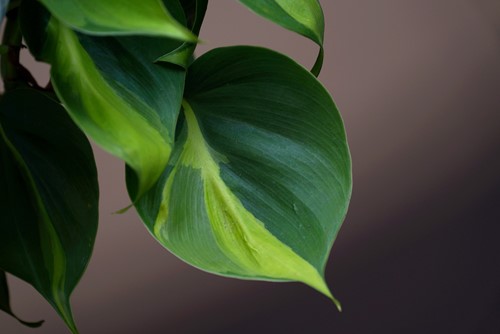
Growing plants in water is a fun and convenient way of bringing nature indoors. Many popular houseplants and herbs can sprout and live in water with the right nutrients. Heartleaf philodendrons are especially successful growing this way. Here is a basic guide for growing a philodendron in water:
What You'll Need
- A clear vessel - Commonly used items for growing a plant in water include glass jars, miniature vases or recycled glass bottles. You can use colored glass if you wish, but doing so will make it more difficult to monitor root growth.
- Clippers, scissors or knife - Find a sharp, sanitized tool for making a cutting.
- Your philodendron of choice - Heartleaf, lemon-lime and Brasil varieties are some of the best choices for this project.
Step by Step
- First, make one or more cuttings. To do so, start at the end of the vine and count back at least two leaves and identify the nearest node. The node will be a small bump or nodule on the vine and might even have tiny aerial roots sticking out.
- Once you've found the node, carefully cut the vine approximately two inches below it. You should have a cutting with at least two leaves and one node.
- Continue this pattern until you've divided the entire vine. Feel free to compost or throw away any remaining leaves or stem pieces without nodes, as they will not grow in water.
- Fill the vessel with non-chlorinated water.
- Place the cuttings in the water as you would display flowers in a vase. Make sure to position the cuttings so that the nodes are submerged completely but the leaves are exposed.
- Put the cuttings in a place where they'll get plenty of bright, indirect light.
- Wait and watch your philodendron cuttings grow new roots from the nodes. This process can take weeks before showing any obvious growth.
Now you'll have a collection of brand-new baby philodendrons. You can transfer them to soil once the roots are at least an inch long or simply keep them in the water. As long as they get enough light and an occasional dose of diluted fertilizer, your philodendron will produce more vines and leaves just as it would when planted.
About the Author

Debbie Caldwell
When you first meet Debbie Harris-Caldwell, you are immediately drawn to her charming Welsh accent and the twinkle in her eye. The well-traveled transplant from Wales is quick to set you at ease and time spent with her promises to be time well spent.
Debbie has been a real estate agent for 40 years and takes great pride in her customer service skills. "I make myself available to my customers when they need me, whether it's on a Sunday Evening or after their long day at work. I make my schedule fit theirs. I also keep my customers updated on everything happening with their listings or purchase, I am their conduit for information." She has built a business following her key principles of clear communication, attention to detail, client advocacy, and comprehensive knowledge of the area. Debbie comes to every new transaction with positive energy, determination, a strong understanding of the currents driving the market, and the expertise that comes from a lifetime of experience. She knows the importance of marketing and whether a home is for sale for $200,000 or for $2 million, she always has professional photography done and creates a listing presentation that best shows off her customer's home.